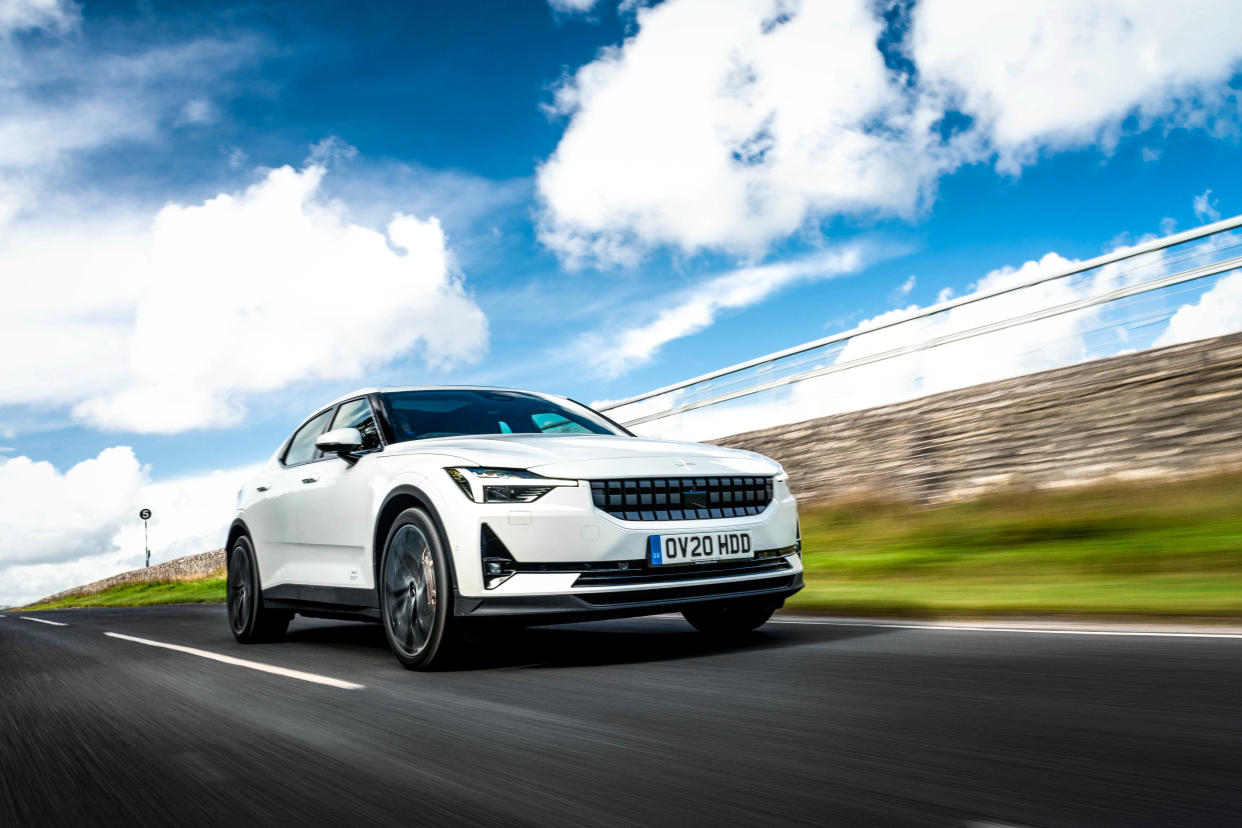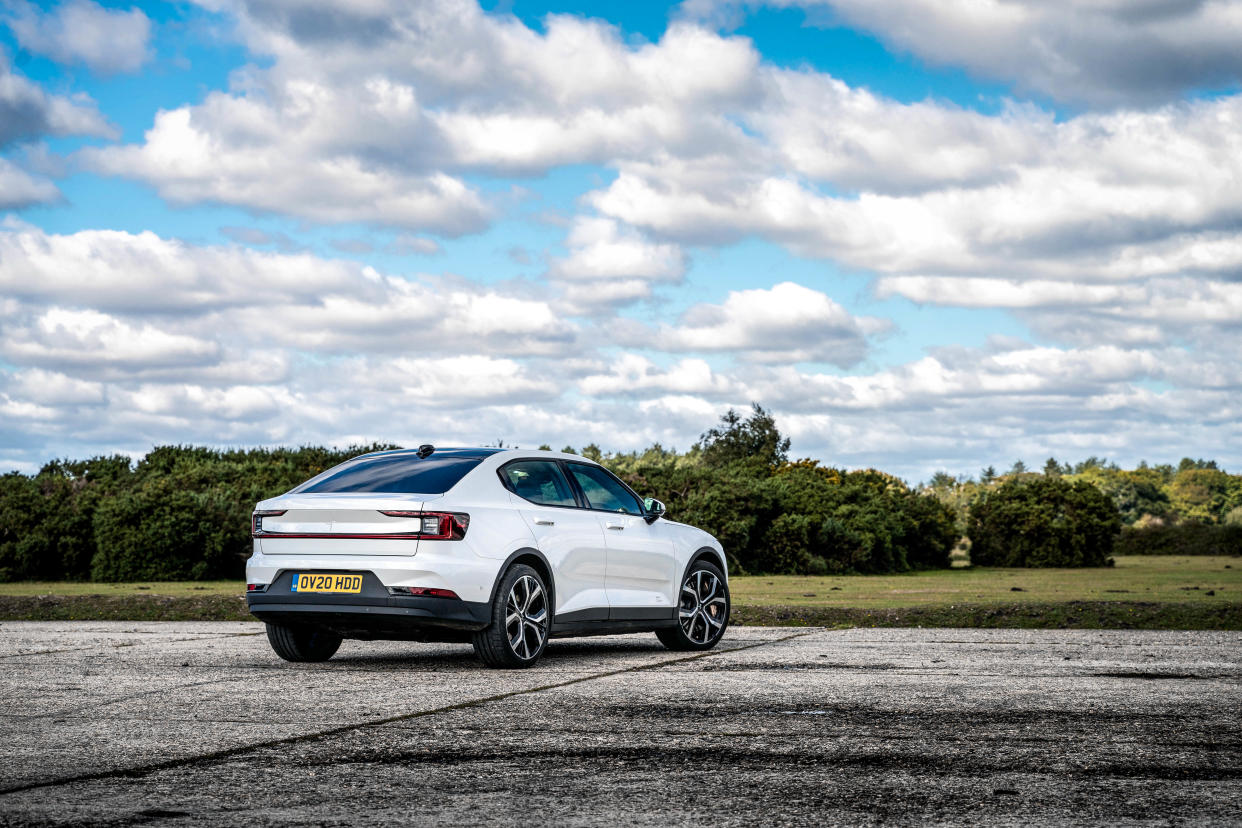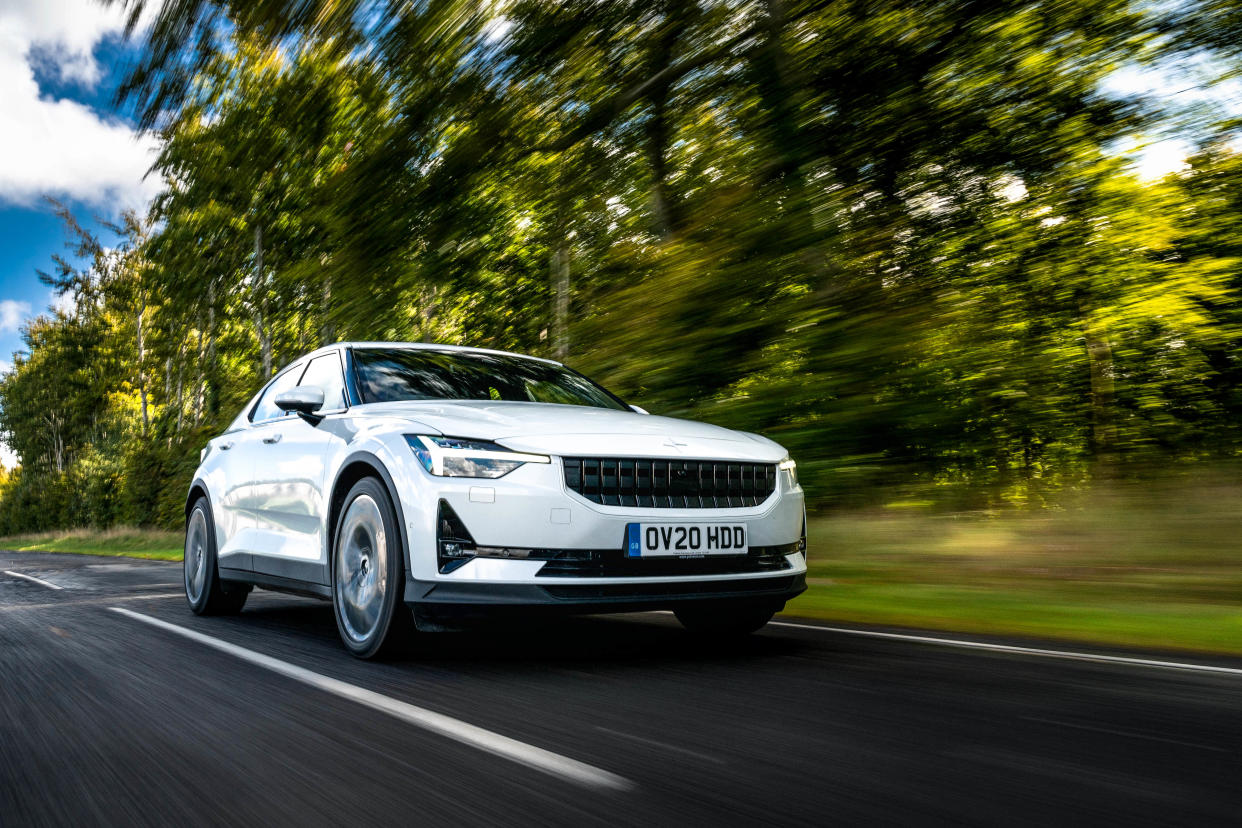Road Test of the Year 2020: Polestar 2

Polestar. It’s a company which, for many years, became synonymous with creating go-faster Volvos, adding a certain Scandi flick of performance to many of the firm’s otherwise quite normal cars. Even recently, we’ve seen ‘Polestar Engineered’-badged Volvo models hit the market, catering for those who want a Volvo but with a healthy dose of performance-based excitement.
But things have changed now. You see, Polestar is very much its own thing and its primary focus is on all things electric. Which brings us to this: the Polestar 2.

The 2 is Polestar’s first completely electric vehicle, following on from – you guessed it – the 1, which used a hybrid setup and wasn’t available in right-hand drive. No, this is Polestar’s Tesla-beater, built with daily use in mind.
And on the face of it at least, things look good. The Polestar 2 is like a spaceship in the metal, with angles and lights that really appear quite ahead of their time. Most of the comments I had from passers-by during my time with the car related to asking just what it was. Most people had no idea. A group of kids on bikes came past while it was parked outside my house, stopped, and then spent the best part of 10 minutes trying to work out what the badge on the nose meant.

And I think that’s kinda cool. Having a sort of undercover badging has a definite appeal, while driving a car that’s from a manufacturer few have heard of is pretty good too. Wherever you go, the 2 turns heads, that’s for sure.
There’s a similar feel inside as well. The influence of Volvo is hard to miss here, with the large portrait-style tablet dominating the interior of the 2 just as much as it does on cars such as the XC90 and V90.

But it’s a relaxing cabin to be in, with very little in the way of distractions. It’s also one of the first cars to use a completely Google-based operating system.
It makes sense to do that too, since whereas other manufacturers struggle on to make their own setups, switching to one made by a company that – let’s be honest – knows a thing or two about making computer software is a smart move. It means that when you say ‘Hello Google’ and tell it a destination you want to navigate to, it does it. First time. No mistakes, no incorrect town. I reckon you could even ask it to navigate to Timbuktu and it’d tell you how many Starbucks were on the way.

This cutting-edge interior is backed by an equally high-tech powertrain, too. The 2 uses a pair of electric motors, with one placed neatly on each axle. Together with a 78kWh battery pack, it produces 402bhp and 660Nm of torque, resulting in a 0-60mph time of 4.5 seconds and a top speed of 127mph, which in anyone’s money is rather brisk. You also get a claimed range of 292 miles, and thanks to its 150kW capability, you can charge from 0-80 per cent in just 40 minutes. Or if, like the majority of EV owners, you’re going to charge the 2 via a home wall box, a full charge will take 12 hours. Come home in the evening, plug it in, and by morning you should be back up to full.
‘Our’ car also came with the optional Performance Pack, which adds adjustable Ohlins dampers for a more supportive ride.

Good lord, does this thing zip away from the line. If you’ve yet to try an electric car I highly recommend you do so, as the way they accelerate from a dead stop is scarcely believable. But the Polestar takes things up a notch, flinging itself towards the horizon with real ferocity. It’s the lack of any noise that makes it all the more surprising, with only the wind rushing over the bonnet giving you any indication that you’re cracking on a bit.
And then when the bends arrive – and they arrive quickly, that’s for sure – the 2 turns and steers with ease, riding through corners as if they were barely there at all.

The only downside comes as a result of those dampers. This car is far too firm for the UK, and when combined with the added heft from sticking a lot of batteries under the floor, you get a ride that jostles and struggles to deal with potholes – not so bad when the roads are smooth, but as we know in Britain, they’re very rarely smooth. We’d rather have a softer version – which, incidentally, is what Polestar is offering soon.
But as an outright package, it’s darned impressive. Sure, it might not be quite as quick as a Tesla or as refined as a Mercedes-Benz EQC, but as an object and a thing to enjoy, it’s right up there.
As I mentioned earlier, there’s also something quite appealing about driving one of the very first cars from a new company, and going by the 2 the future looks bright for Polestar.


